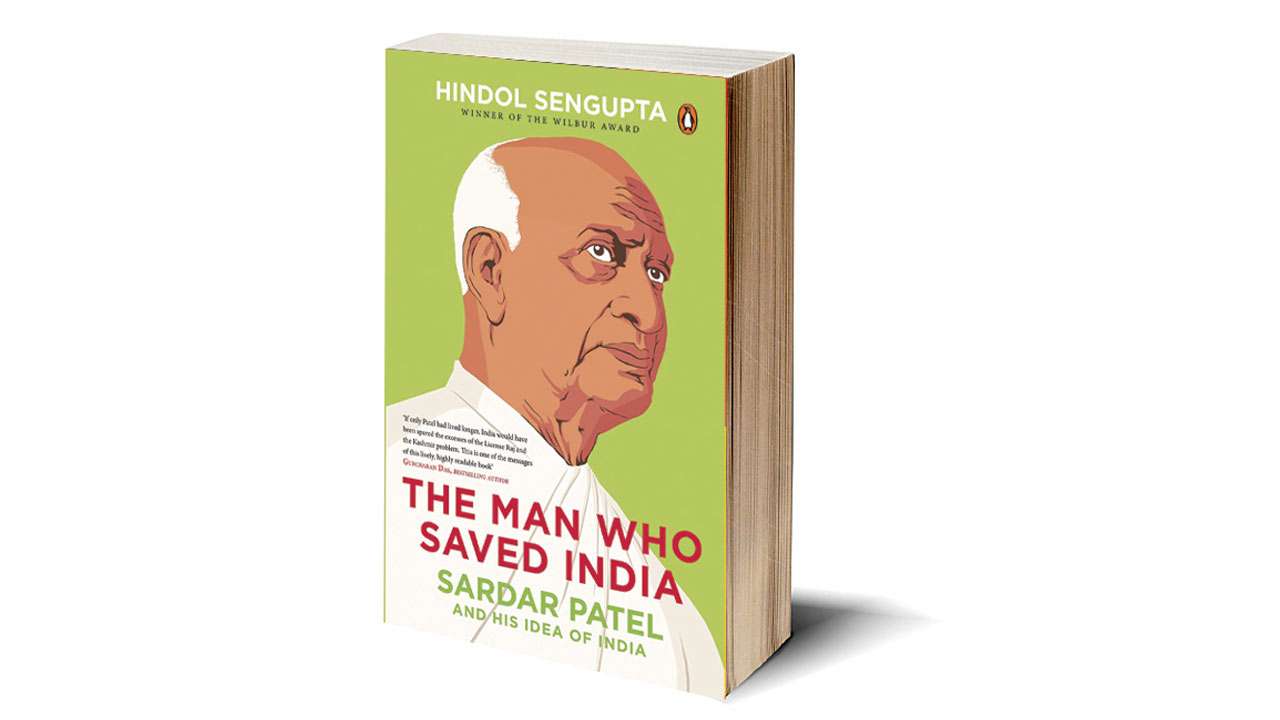
Book: THE MAN WHO SAVED INDIA
Author: Hindol Sengupta
Publisher: Penguin Viking,
Pages: 430
Price: Rs 599
What if?...” – the human mind often likes to wonder.
Many who idolise Sardar Vallabhbhai Patel, India’s first deputy prime minister valorised as the “Iron Man of India”, feel he was a better PM candidate than Jawaharlal Nehru. They reason that Patel’s hard-nosed pragmatism and earthy common sense may have solved many niggling issues faced by the republic today, including Kashmir, in India’s favour.
However, barring works by the likes of Rajmohan Gandhi, the larger public discourse on Patel has either bordered on hagiography or been sweeping, ad hominem attacks. The Man Who Saved India: Sardar Patel and His Idea of India by Hindol Sengupta presents a balanced picture. With its rigorous research and nuanced writing, the book ticks most of the right boxes. But also leaves the reader with a lingering sense of loose ends.
Sengupta, a journalist and author, fleshes out interesting nuggets. For instance, Patel’s complicated relationship with elder brother Vithalbhai, who “cheated him out of the chance” to study law in England, his acrimonious relationship with Subhash Chandra Bose and Babasaheb Ambedkar’s opposition to Article 370, which he called a “treacherous thing against the interests of India”. His pragmatic acceptance of the Partition as against a bloody civil war, initial openness to negotiate on Kashmir to save Hyderabad and advice to Nehru against taking Kashmir to the United Nations (which was eventually ignored), are also mentioned.
Details about Patel’s innate spirit of sacrifice, first for his elder brother and then for Nehru, who elbowed him out to become Congress president with the Mahatma’s support, and later prime minister, his tolerance of business as against Nehru’s inclination towards socialism, his quiet acquiescence to Gandhi over decisions like calling off the Civil Disobedience Movement, make it an easy read.
Sengupta also highlights little-cited facts of history about Patel’s contemporaries who played a role in shaping India’s history and present. Like Aligarh Muslim University founder Sir Syed Ahmed Khan was the first to spell out the two-nation theory, which sowed the Partition, and Allama Iqbal, who composed Sare Jahan Se Achha Hindustan Hamara, later articulated the idea of a Muslim homeland.
Sengupta also records Patel’s role in Constitution building by introducing safeguards for minorities, the right to propagate religion and opposition to separate electorates for minorities.
In his introduction, Sengupta notes that one of the few photos of Patel smiling was taken at Begumpet Airport in 1948, after India succeeded in integrating the princely state of Hyderabad. This was Patel’s finest hour, one that earned him the well-deserved moniker of India’s Bismark.
However, the book omits a crucial fact – the violence against Muslims in the aftermath of the Indian Army’s ‘Police Action’ against Hyderabad. In October Coup: A Memoir of the Struggle for Hyderabad, Mohammed Hyder, a civil servant from Hyderabad, notes how the Indian advance was followed by “murder, loot and arson” with mobs taking over the city. In the melee, women and girls were hunted down and raped. The report of the Pandit Sunderlal commission estimated that 27,000 to 40,000 lives were lost during and after the ‘Police Action’ and quoted “unimpeachable evidence” about men from the army and local police being involved in the loot.
Though Sengupta’s book mentions the contribution of V P Menon, Secretary, States Ministry, headed by Patel in integrating the princely states, it should have noted the stellar role of Swami Ramanand Tirtha of the Hyderabad State Congress in rallying public opinion in favour of the Hyderabad freedom struggle.
Greater elaboration of the contrasting views of Nehru, who saw the danger in majoritarian communalism and Patel over the ban on the RSS and Patel’s opposition to the Left would have helped.
Patel’s biggest contribution was the integration of over 500 princely states into newly-born India using a combination of the carrot and the stick. To conclude, as Sengupta notes, “generations of Indians don’t quite grasp that there would barely be an India had it not been for the Sardar...”